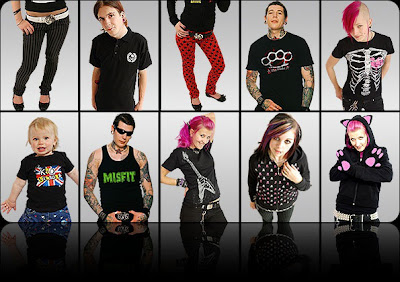Followers of punk are into a certain political standpoint, music and fashion. Punk clothing is the outward expression of punks and has its roots in the 1970s. Punk bands exploded onto the scene in
Some of the new fashion was shocking to the older generation. Torn and ripped clothes were all the rage, accompanied by safety pins, body piercing and studded and spiked jewelry. Hair was often dyed in shades of blue, purple, green or orange and was spiked or given a Mohawk style. Razors and chains were also added to punk clothing outfits. Leather jackets and rubber or vinyl items were popular along with bondage trousers.
Footwear was big and bold and involved military style boots, motorcycle boots or Dr Marten's boots for both sexes. Females would often combine dresses and skirts with masculine looking boots. They would also wear spiked bands and torn, fishnet stockings. Both men and women liked to sport T shirts with offensive slogans, band logos and anarchy symbols.
A new generation of punk fans came along in the 1980s with their own innovations on punk clothing. Hooded sweatshirts became commonplace and combat boots were the norm. Sometimes, punk clothing would incorporate some tartan and studded chokers were very popular. Bandanas were also sold and hair was worn in a short, spiky cut or shaved. Tattoo parlors sprung up to meet the demand. A lot of punks supported the political left and displayed anti-racist and anti-fascist symbols.
Punk music has fragmented today into various sub genres, each with their own fashion style. The bands within these strands still greatly influence clothes and accessories. Punk clothes are an important part of Hardcore, Crust Punk, Deathrock, Skate Punk and Pop Punk.
As with all movements that seem extreme at the time, punk has been largely integrated into the mainstream. A safety pin now seems a nostalgic symbol for the past. Famous fashion designers and labels use punk in their designs. Purists distance themselves from the commercial end of punk fashion. Many fans still like to make their own clothes or buy in thrift shops to get an individual look.
Source: www.statssheet.com


0 comments:
Post a Comment